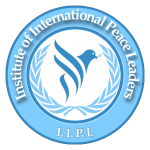- Pakistan’s Defense Policy Review In-depth Analysis
- A Policy Review of Pakistan’s National Youth Policy: Analysis and Way Forward
- Review and Analysis of Pakistan’s National Security
- Economic Vision of Pakistan 2025: A Roadmap for Sustainable Economic – Policy Review
- Policy Review – Climate Change Policy of Pakistan
Economic Vision of Pakistan 2025: A Roadmap for Sustainable Economic
Development - Review
Conducted By:
Pakistan Vision 2025 serves as a comprehensive development framework launched by the Ministry of Planning, Development, and Reform in 2014, aimed at addressing Pakistan’s economic and social challenges by fostering sustainable economic growth, institutional reforms, and social inclusiveness. This paper critically analyzes the economic dimension of Vision 2025, reviewing scholarly articles, government reports, and relevant books that explore the Vision’s strategic pillars. The study highlights key goals, such as energy security, human capital development, and
inclusive growth, while assessing the implementation challenges and potential for success. Ultimately, this paper offers insights into how Vision 2025 may shape Pakistan’s economic trajectory toward sustainable development.
—
Introduction:
Economic development has remained a key challenge for Pakistan, a country marked by periodic financial instability, political uncertainty, and infrastructural deficiencies. To address these persistent issues, the Government of Pakistan introduced Pakistan Vision 2025 in 2014. This vision aims to propel Pakistan toward becoming one of the top 25 global economies by 2025 by promoting
sustainable economic policies, regional connectivity, and institutional reforms.
Vision 2025 is based on seven core pillars, with a strong focus on fostering inclusive economic growth, enhancing energy and water security, building human capital, and improving governance. However, achieving these goals requires consistent policy implementation, political will, and effective management.
This paper seeks to evaluate the economic dimension of Vision 2025 by exploring its strategic objectives, analyzing progress, and critically reviewing literature on the framework’s efficacy. The paper also highlights the challenges and potential pitfalls that could hinder its successful implementation.
Literature Review:
To better understand the scope and impact of Vision 2025, various academic articles, government publications, and journal reviews were examined. Key themes from the literature are summarized below:
- Economic Growth and Inclusive Development: Scholars such as Ishrat Husain in his book “Pakistan: The Economy of an Elitist State” emphasize that Vision 2025 addresses long-standing structural issues in Pakistan’s economy, such as unequal wealth distribution, weak industrial output, and poor export performance. Husain argues that inclusive economic growth requires targeted investments in education, health, and infrastructure.
- Energy and Infrastructure Development: The energy crisis is widely regarded as a major impediment to Pakistan’s economic development. According to articles published in the Pakistan Development Review (PDR), Vision 2025’s focus on energy security, including renewable energy projects and power generation, is crucial for economic stability. However, progress in this area has been slow due to bureaucratic inefficiencies and political instability.
- Human Capital and Knowledge Economy: A critical pillar of Vision 2025 is the development of Pakistan’s human capital. Researchers from the South Asian Journal of Economic Studies highlight that investments in education, skills training, and innovation are essential for fostering a knowledge-based economy.
- Challenges in Implementation: Despite its ambitious goals, Vision 2025 has faced criticism for its slow implementation. Articles from the Journal of South Asian Studies point to challenges such as inadequate funding, political instability, and weak institutional capacity as major obstacles to achieving the Vision’s targets.
—
Main Discussion:
- Key Economic Pillars of Vision 2025:
Vision 2025 is built upon seven strategic pillars, which collectively aim to create a prosperous and resilient Pakistan. Below is a detailed analysis of the economic aspects of these pillars:
1.1. Inclusive Economic Growth: The first pillar emphasizes achieving sustained economic growth by promoting industrialization, expanding exports, and reducing poverty. The government aims to increase Pakistan’s GDP growth rate to 8% per annum by 2025 and double the country’s per capita income.
Key strategies include:
Encouraging foreign direct investment (FDI)
Enhancing agricultural productivity
Supporting small and medium enterprises (SMEs)
However, economic growth has been slower than anticipated due to challenges such as high inflation, fiscal deficits, and declining exports.
1.2. Energy, Water, and Food Security
Energy security is critical for economic stability. Vision 2025 seeks to eliminate Pakistan’s energy shortages by diversifying energy sources, investing in renewable energy, and modernizing the power transmission infrastructure.
Progress and Challenges: While some progress has been made in increasing power generation, issues such as circular debt, transmission losses, and reliance on imported fuel continue to plague the energy sector. Water and food security remain equally important, with Vision 2025 promoting the construction of new dams, efficient irrigation techniques, and food storage facilities.
1.3. Human Capital Development:
Vision 2025 recognizes that economic growth cannot be sustained without investing in human capital.
Key objectives include:
Increasing literacy rates
Expanding access to higher education and vocational training
Improving healthcare services
Despite these goals, Pakistan’s education and healthcare sectors still face significant challenges, including low public spending, outdated curricula, and insufficient infrastructure.
1.4. Infrastructure and Regional Connectivity:
To boost economic integration and regional trade, Vision 2025 emphasizes the development of transportation networks, such as highways, railways, and ports. The China-Pakistan Economic Corridor (CPEC) plays a crucial role in enhancing connectivity and attracting investment.
1.5. Governance and Institutional Reforms:
Weak governance and corruption have historically undermined Pakistan’s economic progress. Vision 2025 seeks to strengthen public institutions, improve transparency, and enhance the rule of law.
Key initiatives include:
E-governance and digitalization of government services
Civil service reform
1.6. Private Sector Development and Entrepreneurship:
Vision 2025 aims to create an enabling environment for private sector growth by reducing bureaucratic hurdles, improving access to finance, and promoting entrepreneurship. Initiatives such as the Kamyab Jawan Program and start-up incubators have been introduced to support young entrepreneurs.
1.7. Knowledge Economy:
In today’s globalized world, innovation and technology play a vital role in economic development. Vision 2025 emphasizes the importance of building a knowledge based economy by investing in research and development (R&D), digital infrastructure, and IT education.
2.Challenges and Criticism:
While Vision 2025 presents a comprehensive roadmap for economic development, its implementation has faced several challenges:
Political Instability: Frequent changes in government and policy discontinuity have hindered progress.
Lack of Institutional Capacity: Weak institutions and bureaucratic inefficiencies have delayed the implementation of key projects. Funding Constraints: Limited fiscal space and heavy reliance on external loans have made it difficult to finance large-scale development projects.
Corruption and Governance Issues: Transparency and accountability remain major concerns. Critics argue that without addressing these structural issues, the ambitious goals of Vision 2025 may remain unrealized.
Conclusion and Policy Recommendations:
Pakistan Vision 2025 offers a strategic framework for achieving sustainable economic growth, improving governance, and enhancing human capital. While progress has been made in certain areas, such as infrastructure development and power generation, significant challenges remain.
To ensure the successful implementation of Vision 2025, the following policy recommendations are proposed:
- Strengthen Institutional Capacity: Improve the efficiency and accountability of public institutions through civil service reforms and digitalization.
- Increase Investment in Human Capital: Allocate more resources to education, healthcare, and skills development.3. Enhance Policy Continuity: Establish mechanisms to ensure policy continuity, even during political transitions.
- Promote Public-Private Partnerships (PPPs): Encourage PPPs to mobilize additional resources for infrastructure and social development projects.
- Improve Governance and Transparency: Strengthen anti-corruption measures and enhance the rule of law.
By addressing these challenges and implementing the recommended policies, Pakistan can move closer to achieving the ambitious economic goals outlined in Vision 2025.
References:
Government of Pakistan. (2014). Pakistan Vision 2025. Ministry of Planning, Development, and Reform.
Husain, I. (2018). Pakistan: The Economy of an Elitist State. Oxford University Press.
Pakistan Development Review (Various Issues).
South Asian Journal of Economic Studies (Various Issues).
Articles on energy, governance, and economic reforms from Journal of South Asian Studies.
Author
-

Urooj Bibi is a passionate political scientist specializing in
View all posts Global Youth Leader IIPL
international relations, currently pursuing a degree in
the field. As a member of the Institute of International
Peace Leaders, she is actively involved in initiatives that
promote global peace and conflict resolution. Her work
reflects a deep commitment to understanding
international dynamics and fostering cooperation to
create a more harmonious world. Her dedication to
peacebuilding and academic pursuits highlight her
drive to make a meaningful impact on global affairs.
